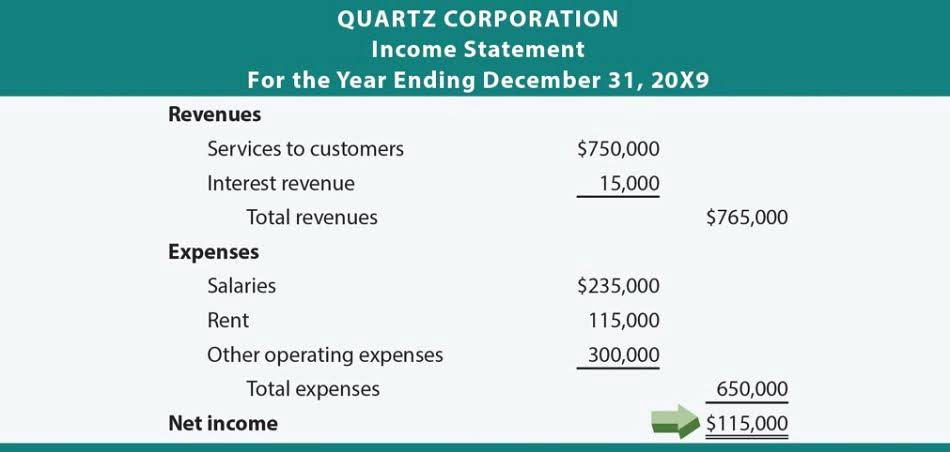
Fortunately, calculating equity for shareholders is relatively straightforward. Remember, equity is just the total asset value of the company minus its liabilities. You can calculate shareholder equity using the information found on any corporate balance sheet. Since equity accounts for total assets and total liabilities, cash and cash equivalents would only represent a small piece of a company’s financial picture.
Ask Any Financial Question
- For instance, in looking at a company, an investor might use shareholders’ equity as a benchmark for determining whether a particular purchase price is expensive.
- Calculate average total equity and ROE in 2019 based on the extracted balance sheet above.
- Total equity is defined as the difference between the total assets value and the total liabilities value.
- Many smaller businesses are strapped for cash and so have never paid any dividends.
- Mezzanine transactions often involve a mix of debt and equity in a subordinated loan or warrants, common stock, or preferred stock.
Investing in the financial world often requires a thorough understanding of various terms, and “Total Equity” is one such term. This critical financial indicator serves as a compass guiding investors towards informed decisions. Total Equity (TE) is the value remaining for shareholders after deducting liabilities total equity formula from assets. Understanding equity lets you know how much your stake in a company is actually worth, how much skin you have in the game, and whether it’s worth continuing being an owner or part-owner of a company. Dividends are paid out in cash, so the company’s cash account would go down by $10,000.
- Shareholder equity alone is not a definitive indicator of a company’s financial health.
- Debt financing happens when a company raises money to finance growth and expansion through selling debt instruments to individuals or institutional investors to fund its working capital or capital expenditures.
- Only “accredited” investors, those with a net worth of at least $1 million, can take part in private equity or venture capital partnerships.
- A decrease in the D/E ratio indicates that a company is becoming less leveraged and is using less debt to finance its operations.
- Once all liabilities are taken care of in the hypothetical liquidation, the residual value, or “book value of equity,” represents the remaining proceeds that could be distributed among shareholders.
What Is Equity, and How Do You Calculate It?
The total assets value is calculated by finding the sum of the current and non-current assets. Treasury shares or stock (not to be confused with U.S. Treasury bills) represent stock that the company has bought back from existing shareholders. Companies may do a repurchase when management cannot deploy all of the available equity capital in ways that might deliver the best returns. Shares bought back by companies become treasury shares, and the dollar value is noted in an account called treasury stock, a contra account to the accounts of investor capital and retained earnings. Companies can reissue treasury shares back to stockholders when companies need to raise money.

Example #1: Issuing more stock
Although debt financing is generally a cheaper way to finance a company’s operations, there comes a tipping point where equity financing becomes a cheaper and more attractive option. Over time, the cost of debt financing is usually lower than the cost of equity financing. This is because when a company takes out a loan, it only has to pay back the principal plus interest. Basically, the more business operations rely on borrowed money, the higher the risk of bankruptcy if the company hits hard times.

Company or shareholders’ equity is equal to a firm’s total assets minus its total liabilities. Unlike public corporations, private companies do not need to report financials nor disclose financial statements. Nevertheless, the owners and private shareholders in such a company can still compute the firm’s equity position using the same formula and method as with a public one. Company equity is an essential metric when determining the return being generated versus the total amount invested by equity investors. A negative D/E ratio indicates that a company has more liabilities than its assets. This usually happens when a company is losing money and is not generating enough cash flow to cover its debts.
- ROE is a financial metric that measures how much profit is generated from a company’s shareholder equity.
- It shows the proportion to which a company is able to finance its operations via debt rather than its own resources.
- Total equity equals total assets minus total liabilities and consists of the amount of money investors have invested in the company and the earnings a company has accumulated from its operations.
- The debt capital is given by the lender, who only receives the repayment of capital plus interest.
- All the information required to compute company or shareholders’ equity is available on a company’s balance sheet.
AccountingTools
Often referred to as paid-in capital, the “Common Stock” line item on the balance sheet consists of all contributions made by the company’s equity shareholders. Dividend recapitalization—if a company’s shareholders’ equity remains negative and continues to trend downward, it is a sign that the company could soon face insolvency. Analysts and investors use this metric to determine if a company uses equity or investment cash to profit efficiently and effectively. Noncurrent or long-term assets you can’t convert into cash in the same timeframe, such as patents, property and plant and equipment (PPE).
Calculating a Company’s D/E Ratio
People used to get pieces of paper called share certificates (shown above) to show that they actually owned shares of a company. Some companies will still issue paper certificates if you ask them for one, but most stock today is handled digitally. If you own a partnership with someone, you probably agreed to split the owner’s equity with one or more of the partners in percentage terms.
Common Stock and APIC Calculation Example
Tesla had total liabilities of $30,548,000 and total shareholders’ equity of $30,189,000. On the other hand, when a company sells equity, it gives up a portion of its ownership stake in the business. The investor will then participate in the company’s profits (or losses) and will expect to receive a return on their investment for as long as they hold the stock.


The above formula is known as the basic accounting equation, and it is relatively easy to use. Take the sum of all assets in the balance sheet and deduct the value of all liabilities. Total assets are the total of current assets, such as marketable securities and prepayments, and long-term assets, such as machinery and fixtures. Total liabilities are obtained by adding current liabilities and long-term liabilities. These metrics include share price, capital gains, real estate value, the company’s total assets and other vital elements of private companies. Because equity is essential for shareholders, it’s also crucial for business owners and people on executive boards to calculate.
- A company with positive shareholders’ equity has enough assets to cover liabilities.
- Because equity is essential for shareholders, it’s also crucial for business owners and people on executive boards to calculate.
- In the automotive industry, “The Big Three”—Ford Motors (F), General Motors (GM), and Stellantis (STLA)—are the top three automakers in the U.S. with the greatest market share.
- She’s entitled to $5,000 of the dividend, leaving Anne and Alex to split the rest.
- You can calculate shareholder equity using the information found on any corporate balance sheet.
How to Find Total Equity on a Balance Sheet
Enter the total assets and total liabilities into the calculator to determine the total equity. Financial equity represents the ownership interest in a company’s assets after deducting liabilities. It reflects the value that belongs to the shareholders or owners of the business. Equity can also refer to other items like brand equity or other non-financial concepts. The fundamental accounting equation is assets equalling the sum of liabilities and equity.

